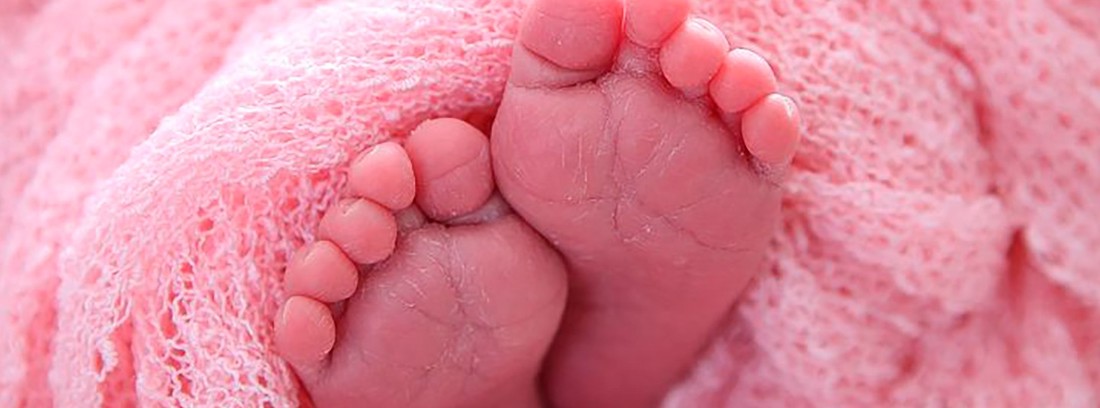Precautionary measures

When the baby is born and, after the first skin-to-skin contact with the mother (if the life of the newborn is in danger, this act will not be carried out until the baby has stabilized), the midwife and the pediatrician perform a series of examinations and newborn care.
Once momentarily separated from its mother, it is placed in a warming crib (it has a heat source) and, after the examination, the baby will be wrapped in warm sizes and a hat will be covered over the head (all this to keep the baby warm since during the first hours of life the newborn has a hard time regulating the temperature and cools easily); at this time the baby can return to its mother.
Medical history of pregnancy and mother
It is important to know, at the time of delivery, if there have been any complications in the pregnancy, if the mother has any disease or if she has taken any medications. With all the data it can be assessed whether the newborn will need any special care.
Identification of the newborn
It is one of the things that must be done before leaving the delivery room and always in the presence of the mother. A bracelet with an identification code is placed on the mother and child. The mother is placed on the wrist and the newborn on the ankle and the umbilical cord clamp. This code will also be present on the baby's registration papers. The bracelet usually contains the mother's name with her medical record number, the date and time of birth, and the room number, if known.
The baby's footprint or plantar impression is used less and less. In some centers, cord blood is started to be stored for future DNA testing if there are doubts about the identity of the newborn.
When the baby is separated from the mother for whatever reason, the identification code is checked to avoid mistakes.
The umbilical cord
The umbilical cord is cut and two plastic clamps are placed so that it does not bleed (it is done in the first two minutes of life). The clamp that is closest to the baby is the one that will stay until the cord falls off and the navel scar remains.
To avoid infection, the umbilical cord is disinfected with an antiseptic substance; This act is called umbilical prophylaxis.
Ocular prophylaxis
To prevent eye infections from bacteria in the birth canal, an antibiotic ointment is put on the newborn's eyes. This ocular prophylaxis prevents neonatal conjunctivitis.
Vitamin K
In newborns there may be a deficiency of vitamin K; It is a very important vitamin for blood clotting and is given by injection to all babies right after birth to prevent hemorrhagic disease of the newborn.
Weight and height
In the first few minutes the baby is weighed and carved (the length is measured). The baby's weight at discharge is usually lower, since the baby is swollen at birth and can lose up to 10% of its weight in the first 48 hours.
Hepatitis B vaccines
It is advisable to administer the Hepatitis B vaccine in the first 24 hours of life. When the first dose is administered in the delivery room, two more doses should be given: one month and six months later.
If the mother suffers from hepatitis B, it is mandatory to administer the vaccine to the newborn at birth.
In newborns who have not received the hepatitis B vaccine at birth, vaccination begins at 2 months of age.
blood groups
The blood group of mother and child is determined to detect if there is any type of blood group incompatibility that requires some type of treatment
The first check-up
The newborn is examined as soon as he is born, at 24 hours of life and before discharge from the hospital. The primary care pediatrician makes a visit before 15 days of life and after one month.
Great importance will be given to cardiac auscultation, archaic reflexes (they evaluate its neurological status), clavicles (it is checked that they are not fractured by childbirth) and hips (early detection with the Barlow and Ortolani maneuvers to assess if there is a congenital dislocation of the hips).
Early detection test
It is commonly called the "heel test." It consists of extracting a small sample of blood from the newborn's heel by means of a tiny puncture with a lancet. blood is drawn after 48 hours of life of the baby (it is one of the reasons why newborns are not discharged before 48 hours of life).
With this blood it is checked if the baby has any metabolic disease: cystic fibrosis, hypothyroidism, adrenal hyperplasia or phenylketonuria (all the Autonomous Communities do not do the four tests). In a month the results arrive home. In this way, an early diagnosis of these diseases is made to put a quick treatment and minimize the repercussions on the baby.
Hearing loss screening test
It is a test that detects if the newborn is deaf. It does this by providing the baby with otoacoustic emissions and auditory brainstem evoked potentials. These tests tell us if sound (auditory stimuli) reaches the brain; if there is no sign, the child has a hearing problem.
It is not done in all centers.
(Updated at Apr 14 / 2024)